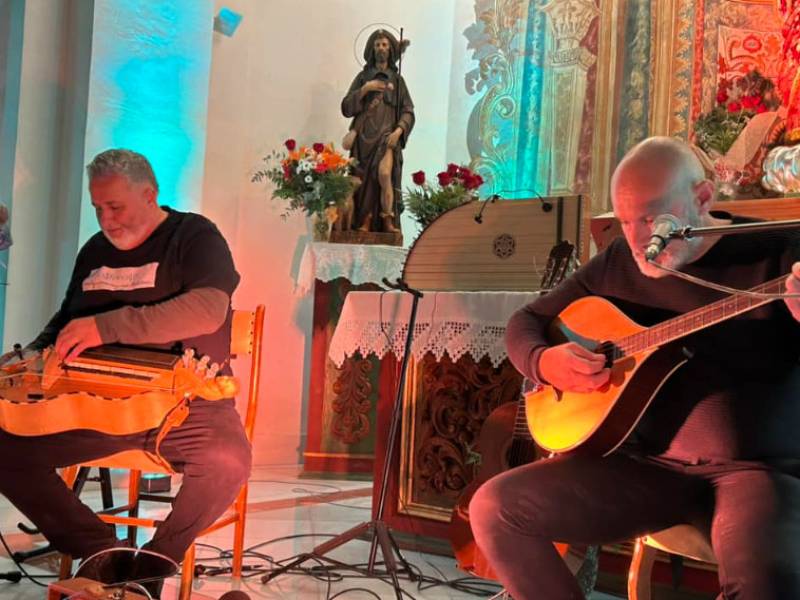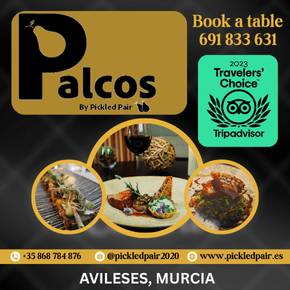- Region
- Águilas
- Alhama de Murcia
- Jumilla
- Lorca
- Los Alcázares
- Mazarrón
- San Javier
-
ALL AREAS & TOWNS
- AREAS
- SOUTH WEST
- MAR MENOR
- MURCIA CITY & CENTRAL
- NORTH & NORTH WEST
- TOWNS
- Abanilla
- Abarán
- Aguilas
- Alamillo
- Alcantarilla
- Aledo
- Alhama de Murcia
- Archena
- Balsicas
- Blanca
- Bolnuevo
- Bullas
- Cañadas del Romero
- Cabo de Palos
- Calasparra
- Camping Bolnuevo
- Campo De Ricote
- Camposol
- Canada De La Lena
- Caravaca de la Cruz
- Cartagena
- Cehegin
- Ceuti
- Cieza
- Condado de Alhama
- Corvera
- Costa Cálida
- Cuevas De Almanzora
- Cuevas de Reyllo
- El Carmoli
- El Mojon
- El Molino (Puerto Lumbreras)
- El Pareton / Cantareros
- El Raso
- El Valle Golf Resort
- Fortuna
- Fuente Alamo
- Hacienda del Alamo Golf Resort
- Hacienda Riquelme Golf Resort
- Isla Plana
- Islas Menores & Mar de Cristal
- Jumilla
- La Azohia
- La Charca
- La Manga Club
- La Manga del Mar Menor
- La Pinilla
- La Puebla
- La Torre
- La Torre Golf Resort
- La Unión
- Las Palas
- Las Ramblas
- Las Ramblas Golf
- Las Torres de Cotillas
- Leiva
- Librilla
- Lo Pagan
- Lo Santiago
- Lorca
- Lorquí
- Los Alcázares
- Los Balcones
- Los Belones
- Los Canovas
- Los Nietos
- Los Perez (Tallante)
- Los Urrutias
- Los Ventorrillos
- Mar De Cristal
- Mar Menor
- Mar Menor Golf Resort
- Mazarrón
- Mazarrón Country Club
- Molina de Segura
- Moratalla
- Mula
- Murcia City
- Murcia Property
- Pareton
- Peraleja Golf Resort
- Perin
- Pilar de la Horadada
- Pinar de Campoverde
- Pinoso
- Playa Honda
- Playa Honda / Playa Paraíso
- Pliego
- Portmán
- Pozo Estrecho
- Puerto de Mazarrón
- Puerto Lumbreras
- Puntas De Calnegre
- Region of Murcia
- Ricote
- Roda Golf Resort
- Roldan
- Roldan and Lo Ferro
- San Javier
- San Pedro del Pinatar
- Santiago de la Ribera
- Sierra Espuña
- Sucina
- Tallante
- Terrazas de la Torre Golf Resort
- Torre Pacheco
- Totana
- What's On Weekly Bulletin
- Yecla


- EDITIONS:
 Spanish News Today
Spanish News Today
 Alicante Today
Alicante Today
 Andalucia Today
Andalucia Today
article_detail
The archaeological museum of Caravaca de la Cruz
The Museo Arqueológico de la Soledad in Caravaca de la Cruz

The extraordinary history and pre-history of the Region of Murcia provides rich archaeological remains at over 2,000 sites dating back to the earliest dawn of the existence of humans, and various of those sites are within the municipality of Caravaca de la Cruz.
In turn, numerous of those remains are contained in the municipal archaeological , illustrating the different cultures which have inhabited this area.
The museum is in the former church of Nuestra Señora de la Soledad, a a simple but imposing and elegant building; 9 soaring vaulted ceilings are supported on a structure of four central columns branching out to 12 half columns and 12 full columns around the central open area.
It is on the site of the oldest church in Caravaca, although what can be seen today was built in the 16th century: the date of 1557 was found "graffitied" inside a ventilation chamber during restoration work a few years ago. The building lay inside the walled structure of the town, an 875-metre long wall protecting the homes of the inhabitants, with the 12th century fortress crowning the hill, safe within a secondary wall.
The exhibits start with the important prehistoric sites in the municipality, including Cueva Negra, where some of the oldest human remains in the Iberian Peninsula were found. Fossilized remains show that humans lived here at least 800,000 years ago, in the transition period between the Early (or Lower) Pleistocene and Middle Pleistocene.

One of the key features of the Cueva Negra is the presence of fossilized remains of Homo Heidelbergensis, and all levels excavated to a depth of 5 metres contain relics shows that the site next to the River Quípar was occupied or at least used by humans continuously for an extremely long time.
In the last centuries BC Caravaca was occupied by the Argaric Culture and then the Iberian tribes, and there was a significant Iberian presence six centuries BC during which a particularly beautiful piece of work in the museum was created. This is called "El Domador de Caballos" and represents a man breaking in horses. It is thought to have been positioned to invoke the protection of the gods over the horses used by the tribe, which were highly prized and valuable assets, denoting the location of land dedicated to their use.
Another case holds an interesting collection of offerings made to the gods by the Iberians, intimate and personal gifts to plead for favours or appease for sins committed, and the museum also contains a collection of Iberian burial goods and trade goods.
The Roman occupation slowly "Romanised" the area and the museum contains a number of artifacts relating to this period. These include "antefijas", decorated plates covering the ends of a run of tiles on a roof to fill in the end and prevent birds or mice destroying the roof, but apart from their practical use they are also decorated with faces or figures.
There is also a "threshold stone", a Roman gravestone, which was excavated from another of the most important sites in the area, the Estrecho de las Cuevas de la Encarnacion.
Other exhibits include a timeline which helps to explain the cultures of some of the people who inhabited the region and show where they fitted into the overall scheme of things, and also the boards explaining the processes which turned mined ores into usable materials, how olives were pressed and ceramics made. Unfortunately, these panels are not in English.

Practicalities of visiting the Archaeological Museum
Disabled/ Limited mobility access: This is not the easiest place for those in a wheelchair to visit as the entrance is via steps on a fairly steep street.
Opening hours
Admission: 1.50 euros
Groups of 15 upwards may request a guided tour in English by prior arrangement.
Address: Museo Arqueológico de Caravaca de la Cruz, Museo de la Soledad, Cuesta del Santuario, 30400 Caravaca de la Cruz (Región de Murcia).

Further information about Caravaca is available from the tourist office (Plaza de España, 7, telephone 0034 968 702 424, email turismo@caravacadelacruz.es).
Or for more local information, including the Holy Jubilee Year as well as local news and what’s on, go to the home page of Caravaca Today.
Loading
Contact Murcia Today: Editorial 000 000 000 /
Office 000 000 000










































